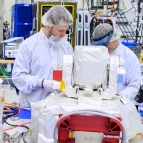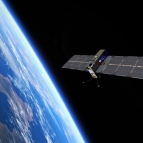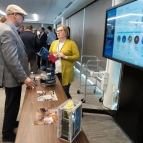Reagan Test Site Optics Modernization

From intercontinental ballistic missile developmental testing in the late 1960s to hypersonic glide-vehicle testing in the 2010s, the suite of tracking and staring optical sensors at the U.S. Army Reagan Test Site (RTS) on the Kwajalein Atoll, Marshall Islands, has made critical contributions to Department of War missile defense and space control programs. In 2015, under Army sponsorship, we successfully completed an eight-year, $20 million program to upgrade the RTS optical suite.
For the RTS Optics Modernization Program (ROMP), our engineers integrated many technologies into a complex system of systems that enables remote, distributed command-and-control mission operations from Huntsville, Alabama. To achieve robust remote operation of an unattended field site, the ROMP team first had to make substantial infrastructure upgrades: installing remote software-switchable power relays, programmable astrodomes, fail-safe rain sensors that activate automatic dome closure, and control room instrumentation and video systems that provide remote monitoring of system health and status. In addition to implementing these infrastructure advancements, the ROMP team successfully developed and delivered sustainable new technology upgrades to servo control systems, digital focal planes, high-speed data recording systems, lenses and telescopes, scripted and automated sensor control systems, and an automatic encrypted security lockdown architecture to support classified operations on Kwajalein's uninhabited outer islands.
ROMP was the pilot project for the Real-time Open Systems Architecture (ROSA II), a distributed computing technology developed with Line funding from the Laboratory's Technology Office. The design of the ROSA II optics software components was based upon a careful functional decomposition of the Super RADOT (Recording Automatic Digital Optical Trackers) systems. Each software component is written to “publish” key data messages to the network while also “subscribing” to data messages it needs from the network. Generally, a ROSA II optical system's computer is configured to run a set of closely related components, and the number of required computers scales as needed to compose the complete distributed system architecture. System operations could thus be composed by using a highly configurable and scalable approach that can employ any number of computer systems distributed across a local or wide-area network.
The technologies developed for ROMP are being utilized in follow-on efforts at RTS, but they can also be applied to other projects. For example, representatives from several test ranges and the sponsor for a newly proposed U.S. Army optical asset have expressed significant interest in the open-systems distributed software technologies and in the remotely operated command-and-control paradigm developed for ROMP.



